by W.S. Cranshaw* (12/12)
Quick Facts…
- Most wasps develop by feeding on insects. Bees develop on a diet of nectar or pollen.
- Almost all insect stings result from yellowjackets and an insect newly established in the state, the European paper wasp.
- Yellowjackets, hornets and paper wasps make nests of paper. Honey bees and bumblebees make nests of wax. Solitary bees and wasps nest in holes in the ground, rotten wood or natural cavities. Some wasps even make mud nests.
Wasps and bees can be a serious nuisance problem throughout Colorado, particularly late in the summer when certain yellowjacket wasps forage at garbage and outdoor food areas. In overall balance, however, these insects are beneficial in their activities, particularly as predators of pest insects and as pollinators. It is important to distinguish between the various wasps and bees because their potential as problems and their control differ.
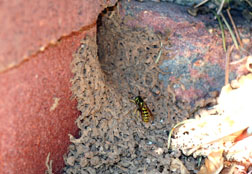
Figure 1. Yellowjacket entering nest underneath wall. |
Social Wasps
Several wasps are social insects that produce a colony. Colonies begin anew each spring, initiated by a single fertilized female (queen) that has survived winter. The social wasps construct their nest of paper, which they produce by chewing on wood, scraps of paper and cardboard.
Social wasp colonies are very small early in the season, but expand rapidly through the summer as more wasps are raised that assist in colony development. By the end of summer, a colony may include dozens, or even several hundred, individuals. Some wasps reared at the end of the season are fertile females (potential queens) and a few males. In fall, colonies are abandoned, never to be reused, and the fertilized females scatter to find protection during winter. The remaining members of the colony perish with cold weather.
Most social wasps rear their young on a diet of live insects. Several types of social wasps are important in controlling insect pests such as caterpillars. An exception to this is the western yellowjacket, which primarily scavenges dead insects, earthworms and other carrion, including garbage. This scavenging habit is usually why yellowjackets become serious nuisance problems. Male wasps occasionally visit flowers to feed on nectar, however, social wasps are generally not important plant pollinators.
All social wasps are capable of producing a painful sting but none leave the stinger embedded, as do honey bee workers. Most stings occur when the colony is accidentally disturbed.
Yellowjackets (Vespula spp.) are banded yellow or orange and black and are commonly mistaken for honey bees, but they lack the hairy body and are more intensely colored. Yellowjackets typically nest underground using existing hollows. Occasionally nests can be found in dark, enclosed areas of a building, such as crawl spaces or wall voids.
Nests are enclosed in a paper envelope, but they are not exposed nor observed unless excavated. The nest entrance is small and inconspicuous. Colonies are readily defended and yellowjackets will sting when the nest area is disturbed.
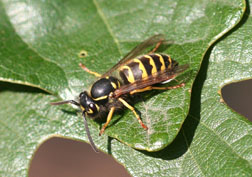
Figure 3: Western yellowjacket. |
The western yellowjacket (V. pensylvanica) is, by far, the most important stinging insect in Colorado. Late in the season, when colonies may include up to 200 individuals, they become serious nuisance pests around outdoor sources of food or garbage. The western yellowjacket is estimated to cause at least 90 percent of the “bee stings” in the state.
Hornets (Dolichovespula spp.) produce large, conspicuous grayish paper nests in trees, shrubs and under building eaves. The most common species is the baldfaced hornet (D. maculata) which is stout-bodied and marked with dark and white striping. Hornets feed their young live insects and do not share the scavenging habit of yellowjackets. Nests often attract attention because of their large size, but hornets rarely sting unless the colony is seriously disturbed.
Paper wasps (Polistes spp. and the western paper wasp, Mischocyttarus flavitarsus) make paper, open cell nests that are not covered by a papery envelope. Often these nests are produced under building overhangs. However, a new species to Colorado, the European paper wasp (Polistes dominula), will also nest in small cavities in the sides of buildings, within metal gutters and poles, outdoor grills, and similar items. Paper wasps are more slender-bodied than other social wasps. Most native paper wasps are reddish-brown and marked with yellow, but the European paper wasp is marked with shiny black and yellow, allowing it to be easily mistaken for a yellowjacket.
Paper wasps are beneficial predators of caterpillars and other insects and do not scavenge. However, the habit of the European paper wasp to nest in many locations around a yard has greatly increased the incidence of stings associated with this group of wasps.
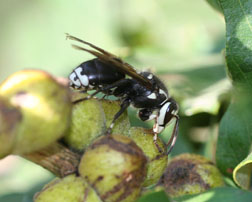
Figure 2: Baldfaced hornet. |
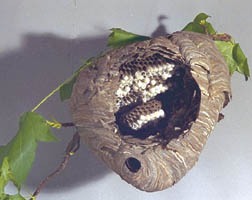
Figure 4: Baldfaced hornet nest cutaway to expose paper comb. |

Figure 5. The western paper wasp, a native species of paper wasp. |
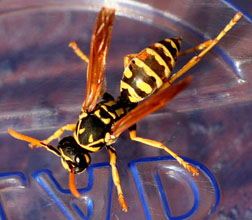
Figure 6: European paper wasp. |
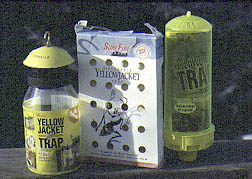
Figure 7: Yellowjacket traps. |
Control of Social Wasps
Many concerns with social wasps occur late in the season when colonies grow large and the above-ground nests of hornets and paper wasps become apparent. If the wasps are not causing a problem, the best solution is to wait until the nest is abandoned in the fall. The nest can be safely removed in the winter or, if left alone, will break up during late fall and winter.
Reducing paper wasps nesting sites is possible before the colonies become established in early spring. This is done by sealing all openings that allow access to hollow tubing or similar materials. The interior of many kinds of children’s playground equipment are suitable nesting sites by this wasp and should be given special attention.
Active nests causing problems can be destroyed with an insecticide. Insecticide applications are best made during late evening or cool periods in early morning, when the wasps do not readily fly and most foragers have returned to the colony. A variety of insecticides are currently sold for this purpose with active ingredients including permethrin, deltamethrin, tralomethrin, bifenthrin, tetramethrin, allethrin, and esfenvalerate. Many of these are combination products that include a fast-acting, short-lived ingredient (e.g., allethrin, tetramethrin) with an insecticide that is more persistent in ability to control wasps (e.g., permethrin).
For exposed nesting species, such as paper wasps, insecticides can easily be applied directly to the nest and control should be excellent. However, ground nesting yellowjackets with only a small external entrance can be much more difficult to control since the nest may actually be some distance from the opening. Repeated insecticide applications are often required to destroy existing yellowjacket nests.
Social wasps nests are more easily controlled early in the season when colonies are small.
Nuisance problems with scavenging yellowjackets are difficult to manage unless all the nests are found and destroyed. However, nests are inconspicuously located and the wasps may fly as far as 1,000 yards from the colony while foraging, so complete control is difficult.
Yellowjackets will regularly return to sites where food and water sources are available. Therefore, it is important to deter yellowjackets from visiting an area by eliminating all food sources (e.g., open garbage cans, pet foods). Water sources around the yard may also attract yellowjackets during hot, drought-stricken periods.
There has been some success using baits and traps for control of yellowjackets. The western yellowjacket is attracted to the chemical heptyl butyrate, which is included as a lure in many wasp traps. Such traps can be helpful when used early in the season, June and early July, when the number of yellowjackets is small and the colonies are struggling to become established. However, these traps will not attract European paper wasp and are worthless for control of this species.
Solitary Wasps
Many kinds of wasps do not produce a colony, including the hunting wasps (Sphecidae family) and spider wasps (Pompilidae family). Instead the female wasp constructs some sort of nest and provisions it with prey.
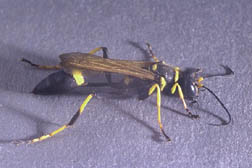
Figure 8: Mud dauber. (Photo from the K. Gray collection.) |
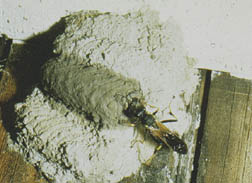
Figure 9: Mud dauber building nest. (Photo by H. Evans.) |
Nesting habits vary with the different hunting wasps. Some excavate nests in soil, others dig out chambers in the pith of plants, or use existing holes. Some even construct nests made of mud. Perhaps the best known of these is the mud dauber, which makes a series of elongate cells, each of which is then packed with paralyzed crab spiders on which their young develop.
Some solitary hunting wasps may have a fearsome appearance but they are non-aggressive and sting only if directly handled or accidentally trapped. With the exception of spider wasps, the sting is quite mild compared to that of social wasps.
An unusual wasp common in prairie areas are the velvet ants. Females are wingless, hairy, extremely active and possess a painful sting. Velvet ants develop as parasites on ground-nesting bees.
Another important group of wasps are the parasitic wasps. These wasps lay their eggs in other insects and the developing wasp larva slowly consumes and ultimately kills the host insects. Parasitic wasps are non-aggressive, only sting when handled, and are considered beneficial for their role in controlling a wide variety of pest insects. They are discussed further in fact sheet 5.550, Beneficial Insects and other Arthropods.
Social Bees
Bees differ from wasps in many respects, most fundamentally in their diet. Whereas developing wasps feed on insects and other materials of animal origin bees develop on nectar and pollen.

Figure 10: The honey bee is an important and beneficial insect due to its production of honey and other products, as well as pollination of plants. |
The honey bee (Apis mellifera) is the only bee, or wasp, that produces a persisting perennial colony. During winter, honey bees survive clustered together within their hive. The queen, the only fertile female, begins to lay eggs in late winter and the young are fed on stored pollen and nectar. At midwinter the size of the colony may only number around 10,000, but numbers increase with the presence of flowering plants that provide food.
The majority of bees in the honey bee colony are workers – females that are infertile solely because their diet during development was insufficient for them to mature into a fertile queen. All of the bees – workers, the queen, and the few males (drones) – are dependent on each other and can not survive for long outside the colony.
In this sense, a honey bee colony is often described as being a “super organism” where all the individual insects have essential roles on which the entire colony depends. As a result, reproduction of honey bees is different and requires that the colony periodically subdivide, a process known as swarming. During swarms about half the colony leaves the hive along with the queen and attempts to establish a new colony. The remaining bees then rear a new queen, who may begin to lay eggs 3 or 4 weeks after a swarming event.
Most honey bee swarms occur on sunny afternoons in May and June. Immediately after leaving the colony the swarm usually settles nearby clustered on a branch. They then send out bees to scout for suitable nest sites—hollow trees or hives of beekeepers. Once a location is found, the swarm departs to the new home. On the rare occasions when a new nest site is not found, honey bees will begin to produce a wax comb where they originally came to rest. During the summer these types of colonies may expand greatly but invariably are killed out during winter due to exposure.
| A strain of the honeybee, known as the Africanized honey bee, has received considerable attention due to its tendency to readily sting when nests are disturbed. This is a tropical strain of bee that is poorly adapted to areas of cool weather. It does occur in parts of the southwestern United States but is unlikely to ever establish in Colorado. |
Sometimes honey bee colonies are located within wall voids of buildings. When this occurs the colony must be eliminated as soon as possible. If allowed to develop, large amounts of wax and honey can be produced which ultimately damages the building when the hive dies out or when the combs melt due to extreme heat.
Honey bees are not aggressive insects, although they will readily defend the colony. Most stings occur when people step barefooted on bees visiting ground covers or when they accidentally are trapped in clothing. The foraging bees seen visiting flowers do not attack.
Unlike other bees and wasps, the stinger of the honey bee is barbed and embeds into the skin. When the bee withdraws the stinger the poison sac is left behind. The bee subsequently dies.
In Colorado, the honey bee is important to the agricultural economy. They are exceptional pollinators and many crops are dependent on them for production including apples, pears, peaches and melons. The value of pollination alone typically exceeds $20 million annually and several million dollars of honey and beeswax products are also produced.
Unlike the honey bee, bumble bees (Bombus spp.) are native to Colorado. Up to two dozen species are present in the state. All are heavy bodied, quite fuzzy and banded orange or yellow and black.
Bumble bee colonies are produced annually. Fertilized queens survive the winter and attempt to establish colonies in spring. Oftentimes bumble bee nests occur in abandoned rodent burrows, but they may also occur in other small hollow spaces, particularly if there is insulating debris available.
The size of bumble bees varies with the season. Large queens are observed first, followed by the tiny workers she has reared. As the colony increases, the size of the bumble bees that are produced also increases. New queens and males develop by the end of the summer.
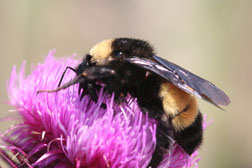
Figure 11: Bumble bee queen. |
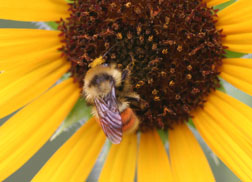
Figure 12: A small, midsummer bumble bee worker. |
Solitary Bees
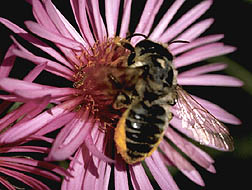
Figure 13: Leafcutter bee collecting pollen. |
The majority of bee species do not produce a colony. These solitary bees include leafcutter bees, digger bees, acute-tongued burrowing bees, and sweat bees. These bees use existing holes, excavate nests in rotten wood and plant stems, or dig burrows in the ground. Within these nests they create a series of cells for rearing the young. One group of these, the leafcutter bees (fact sheet 5.576, Leafcutter Bees), line the nest cells with cut fragments of leaves and flower petals. All solitary bees, however, pack the nest cells with nectar and pollen. Although these solitary bees individually produce nests, sometimes many will nest in close proximity. This is particularly common with digger bees.
Solitary bees are not aggressive and stings are quite mild. Most solitary bees can be closely observed and will elicit no defensive behaviors. Perhaps the most common stings that occur are when the sweat bee, which is attracted to moisture, stings when swatted. Males of some solitary bees – which can not sting – sometimes will make aggressive-looking bluffing flights when defending a territory.
Control of Bees
Insecticides used for control of wasps can also be used to kill bees.
Local beekeepers will often collect honey bees that have just swarmed. Collecting swarms typically involves shaking the swarm into a suitable hive box. They will all remain together if the queen is collected. The swarm is then removed at night after the foraging scout bees have returned. Many Colorado State University Cooperative Extension county offices carry lists of local beekeepers that may be willing to collect honey bee swarms.
Honey bees that are already established behind a wall of a building produce special problems. If there is an extensive wax comb and honey, an area of the wall will need to be removed to extract this material. If old combs are left in place after a honey bee colony dies, the wax and honey will melt and flow causing damage. Rodents and insects will also become attracted to this site. It is rare to find beekeepers willing to collect bees that are established behind the walls.
Solitary bees can be difficult to control with insecticides since there are multiple nest entrances and multiple rearing cells within each nest. Often only a portion of the nest is killed and the surviving young emerge the following season.
Where large numbers of digger bees nest in close proximity, the permanent control solution is to modify the soil surface. Incorporate soil amendments (e.g., compost, peat moss), establish a plant cover, change the slope or change the watering habits to disturb digger bee nesting sites. The following season, they will move to a new location. Fortunately, these bees are mild tempered. All solitary bees should be conserved whenever possible.
| Table 1. Physical description of the most common bees and wasps. |
| Honey bee (Apis mellifera): Very hairy. General color orange or yellow-orange, sometimes with dark gray. Individuals collecting pollen will pack it into clumps in special structures (pollen baskets) on the hind legs. |
| Bumble bees (Bombus spp.): Very hairy and stout bodied. Black and yellow markings on all species but many are marked with orange or orange-red on the abdomen. |
| European paper wasp (Polistes dominulus): Not hairy. General color black and bright yellow. Overall body form more elongate than the other species. Hind pair of legs long and trail conspicuously when flying. |
| Western yellowjacket (Vespula pensylvanica): Not hairy. General color black and bright yellow. Overall body form slightly more compact than European paper wasp. |
| Baldfaced hornet (Dolichovespula maculata): Not hairy. General color is black and creamy white. Overall body form similar to yellowjacket, but larger. |
First Aid for Stings
Honey bees – but not other bees or wasps – generally leave the stinger embedded in the skin. Remove the stinger as soon as possible since some additional venom may be pumped by the venom sac. Honey bee stings are best removed by scraping (not crushing) the stinger with a finger nail or knife blade.
Localized swelling and pain are typical reactions to a sting by a wasp or bee. In most people, these symptoms gradually disappear within a few hours. Some swelling, itching and pain are all normal reactions and do not necessarily indicate a systemic reaction to the venom of the sting.
Treat the sting site with an antiseptic to prevent possible infection. Cool lotions or compresses can help relieve pain and swelling. Various materials applied to the sting site may also reduce pain – crushed aspirin, meat tenderizer and urine are among those that have been suggested. If many stings are received oral antihistamines can sometimes reduce swelling and itching.
A small percentage of the U.S. population (approximately 1 percent) develops hypersensitivity to either bee or wasp venom following repeated stings. A systemic allergic reaction can involve difficulty in breathing, dizziness, nausea and development of hives. These symptoms may require immediate medical attention from a physician.
| Table 2. Comparison of habits of common Colorado bees and wasps. | ||||
| Feature | Honey bee | European paper wasp | Western yellowjacket | Baldfaced hornet |
| Nest construction | Wax comb | Paper comb, no envelope | Paper comb covered with paper envelope | Paper comb covered with paper envelope |
| Nest location | Large hollows, hives | Under eaves, in small voids | Usually underground, rarely wall voids | Above ground in trees, shrubs, under eaves |
| Colony permanence1 | Perennial | Annually produced | Annually produced | Annually produced |
| Peak colony size | >10,000 | <100 | 100s | 100s |
| Food habits | Nectar, pollen, some sweet foods | Live insects | Dead insects, garbage, meats, sweet foods | Live insects |
| Stinger | Barbed, left during stinging | Not barbed | Not barbed | Not barbed |
| Attraction to wasp trap | No | No | Yes | No |
| 1Perennial colonies of honeybees persist from season to season intact, with egg laying suspended during fall and early winter. Annual colonies are abandoned at the end of the season and fertilized females scatter to protected locations for winter. Colonies are initiated each spring. | ||||
*Colorado State University Extension entomologist and professor, bioagricultural sciences and pest management. 4/96. Revised 12/12.
Colorado State University, U.S. Department of Agriculture, and Colorado counties cooperating. CSU Extension programs are available to all without discrimination. No endorsement of products mentioned is intended nor is criticism implied of products not mentioned.
Go to top of this page.





